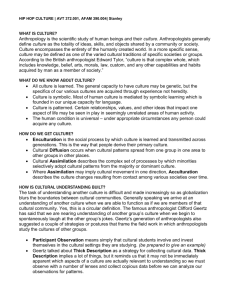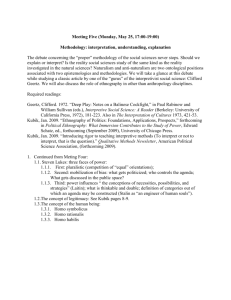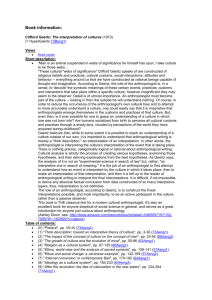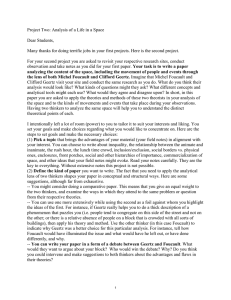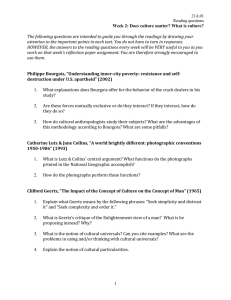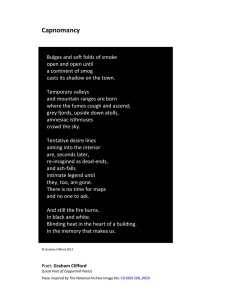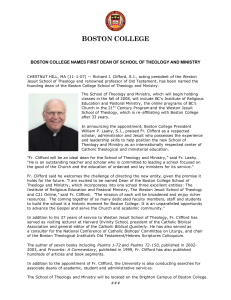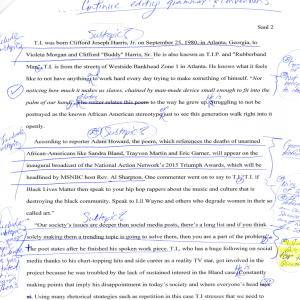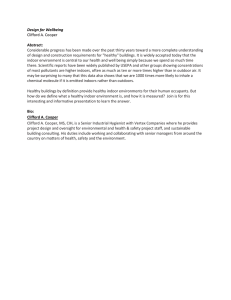Religion Study Course Outline: Theories & Approaches
advertisement
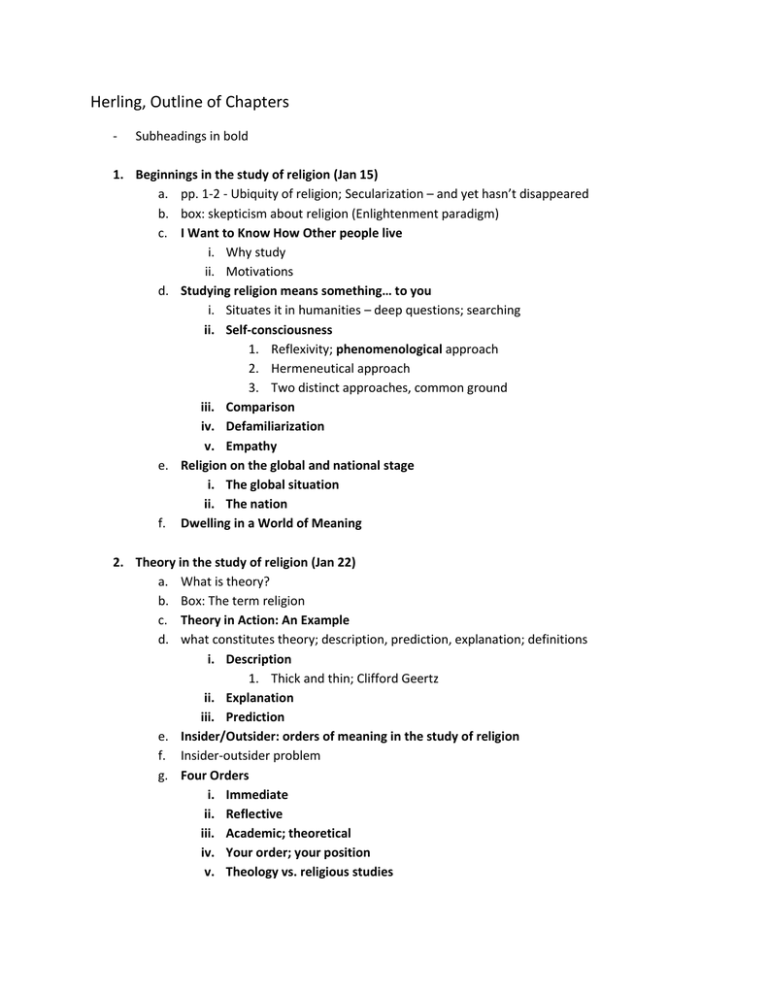
Herling, Outline of Chapters - Subheadings in bold 1. Beginnings in the study of religion (Jan 15) a. pp. 1-2 - Ubiquity of religion; Secularization – and yet hasn’t disappeared b. box: skepticism about religion (Enlightenment paradigm) c. I Want to Know How Other people live i. Why study ii. Motivations d. Studying religion means something… to you i. Situates it in humanities – deep questions; searching ii. Self-consciousness 1. Reflexivity; phenomenological approach 2. Hermeneutical approach 3. Two distinct approaches, common ground iii. Comparison iv. Defamiliarization v. Empathy e. Religion on the global and national stage i. The global situation ii. The nation f. Dwelling in a World of Meaning 2. Theory in the study of religion (Jan 22) a. What is theory? b. Box: The term religion c. Theory in Action: An Example d. what constitutes theory; description, prediction, explanation; definitions i. Description 1. Thick and thin; Clifford Geertz ii. Explanation iii. Prediction e. Insider/Outsider: orders of meaning in the study of religion f. Insider-outsider problem g. Four Orders i. Immediate ii. Reflective iii. Academic; theoretical iv. Your order; your position v. Theology vs. religious studies 3. Classic Theories in the study of Religion, part 1 (Jan 29) a. Trajectory of study - Individual to the social b. The study of religion: a modern phenomenon? c. Religion as unique experience i. Rudolph Otto ii. William James d. Religion and its social function i. Emile Durkheim ii. Max Weber iii. Victor Turner iv. Clifford Geertz v. Conclusion: Welcome to the Jungle 4. Classic Theories in the study of religion, part 2 (Feb 5) a. What is theory? b. Religion as illusion i. Karl Marx ii. Sigmund Freud c. Phenomenology of religion i. Carl Jung ii. Mircea Eliade iii. Ninian Smart d. Back t theology i. Paul Tillich ii. W.C Smith e. Conclusion: Back to Plato’s cave

